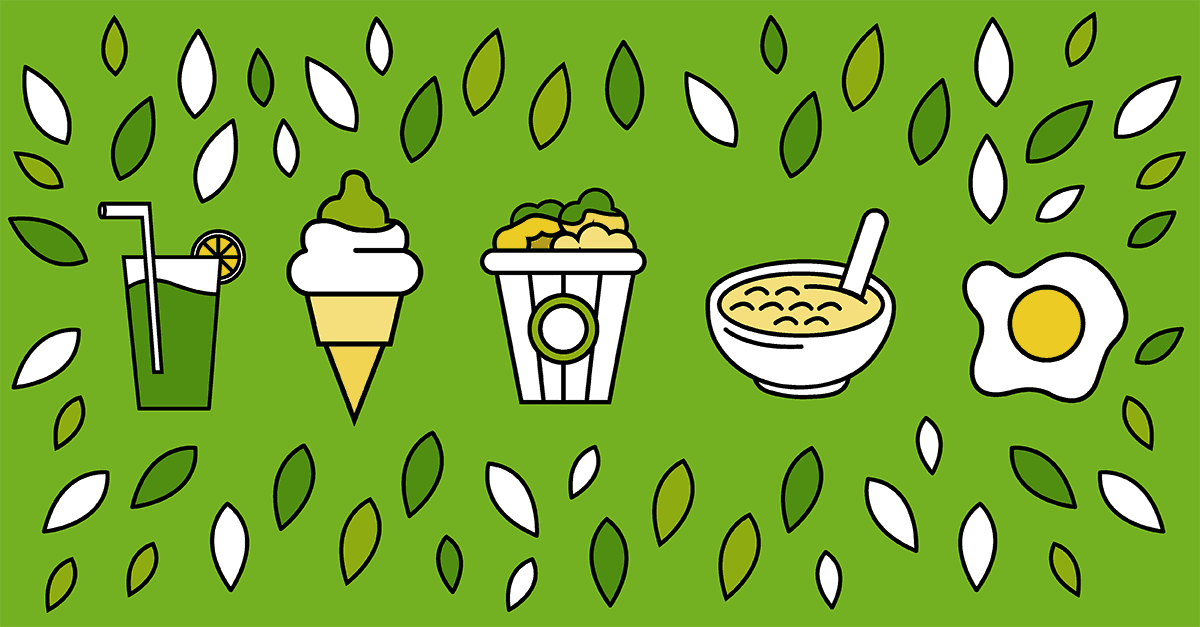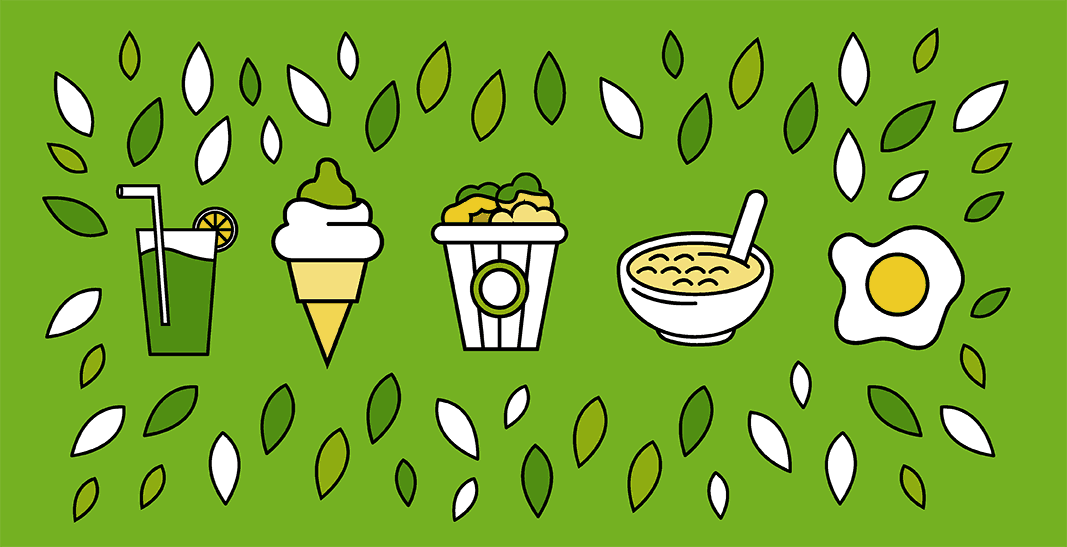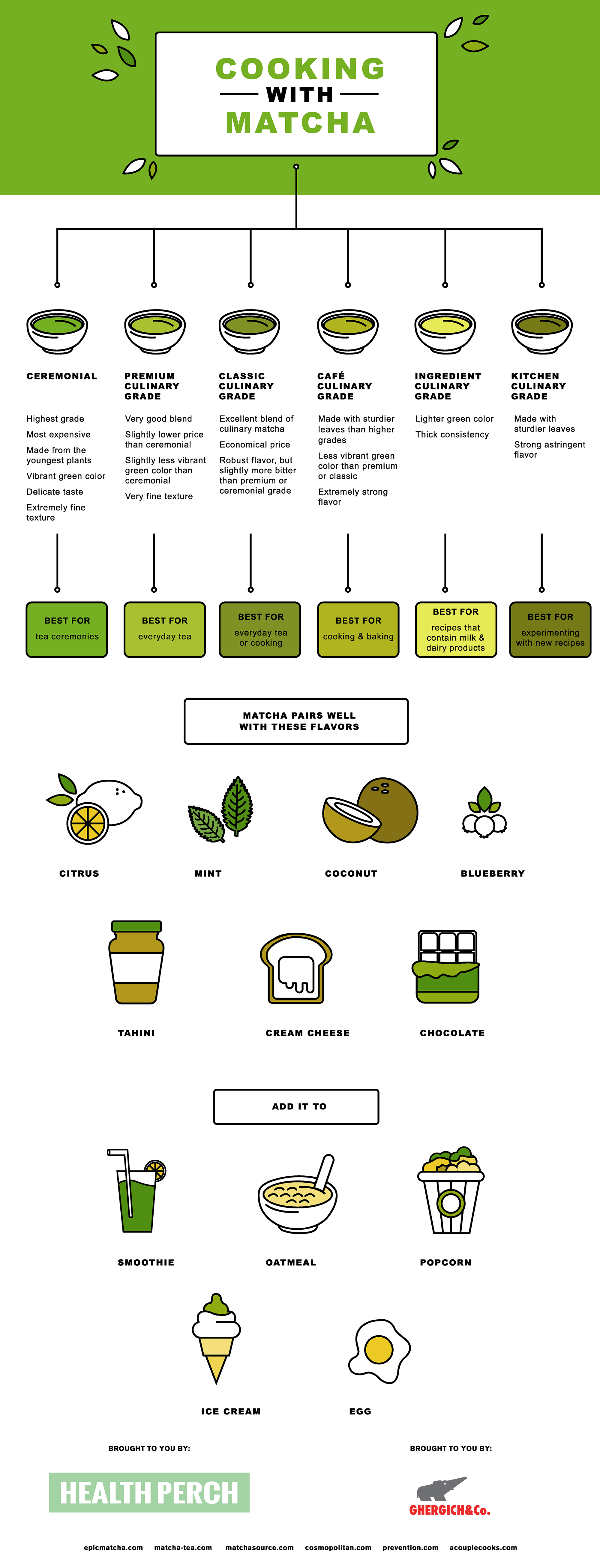Got matcha? If you’re into healthy beverages, you may have tried this Japanese delicacy. Matcha tea has been the focal point of Japanese tea ceremonies for more than 800 years, and lately it’s showing up everywhere, from Starbucks’ menus to the ice-cream aisle.
Matcha is made from the leaves of the Camellia sinensis plant, the same plant used to make all green and black teas. To create matcha, farmers grow tea plants in special shaded conditions, pick the finest young buds, and use a slow-turning granite grinder to rub them into an ultra-fine, vivid jade-hued powder. Matcha powder is whisked into warm water to make traditional matcha tea, frothed with milk to make green-tea lattes, and used to flavor and color various foods.
Green tea is sometimes called the healthiest beverage on the planet. Matcha tea boasts even more nutrients than brewed green tea because it contains the actual tea leaves (rather than just liquid flavored by steeping leaves). In fact, tea made from matcha powder has 137 times more of the potent antioxidant epigallocatechin gallate (EGCG) than brewed green tea, according to one study. Intrigued? Let’s dig into more of the health benefits of matcha and discover 10 delicious and healthy recipes with matcha in the starring role.
Health Benefits
Antioxidants are important because they prevent and repair oxidative damage to cells, and EGCG is only one of the polyphenol antioxidants in green tea. Green tea contains eight to 10 times more polyphenol antioxidants than most fruit and vegetables, according to one assessment.
Drinking green tea is associated with lower heart disease risk. In a review of studies, people who drank the most green tea had a 28 percent lower risk of coronary heart disease. Moreover, in a number of studies green tea significantly lowered LDL cholesterol levels when compared to a placebo.
Tea may also help protect against diabetes. In a study of Japanese adults, those who drank 6 cups per day of green tea had a 33 percent lower risk of diabetes.
Other studies suggest drinking green tea may help protect against developing squamous cell carcinoma of the skin, prostate cancer, lung cancer, breast cancer, rheumatoid arthritis, and Parkinson’s disease, and it may also lower your likelihood of getting the flu.
Cognitive Benefits
Matcha not only contains more antioxidants than brewed green tea; it contains more caffeine, too. Matcha boasts about 70 milligram of caffeine per 8-ounce cup, compared to 25 milligram per 8-ounce cup of brewed green tea and 50 to 200 milligram per 8-ounce cup of drip coffee.
Unlike coffee, matcha doesn’t usually make people feel anxious or jittery because it also contains a soothing amino acid called L-theanine, which relaxes the mind without inducing drowsiness. When taken together in combinations such as those found in matcha, caffeine and L-theanine have been shown to improve performance on cognitively demanding tasks.
Eat Your Matcha
Not ready to trade in your morning cup of coffee for a frothy green beverage just yet? Use antioxidant-rich matcha powder to make these delicious dishes. Bonus: Research suggests foods containing matcha may slightly enhance cognitive performance, although not as much as drinking matcha tea.
If you thought grain-free, dairy-free, and sugar-free pancakes were impossible, you’re going to love these nutritious breakfast treats made with matcha, buckwheat flour, and honey.
Power up your smoothie with bright green antioxidants, then slow down and enjoy it with a spoon rather than slurping it on the go. This recipe is vegan and gluten-free.
This treat tastes like dessert, but is packed with fiber, healthy fats, vitamins, minerals, and antioxidants. Top it with yogurt and berries for a nutritious meal or a snack.
Matcha is not just for sweet foods. Add it to sushi rice to make adorable and savory delicacies.
What happens when kale and matcha join powers? Try this silky, vegan soup to find out.
Just when you thought salad couldn’t get healthier, this matcha-sprinkled version gets an extra boost of antioxidants.
You’ll love these vegan, gluten-free, and paleo-friendly bars, especially if you’re a fan of chocolate and green tea.
This homemade no-churn ice cream is creamy, vegan, sugar-free, and highly addictive.
Flavorful and nutritious truffles that happen to be bright green and dipped in chocolate? Yes, please!
Whip together an easy sugar-free and gluten-free mug treat so you can eat your cake and get your antioxidants too.
Conclusion
Matcha is trendy for a reason: Its appealing vivid green color and earthy flavor adds zest, intrigue, and a healthy boost of antioxidants to a wide variety of dishes.


